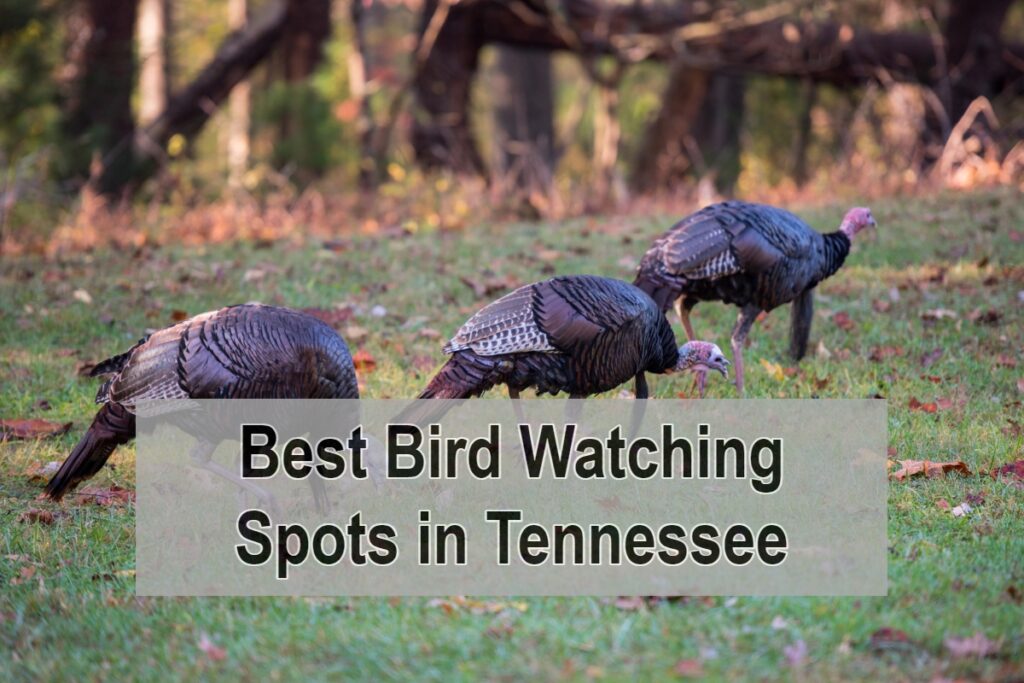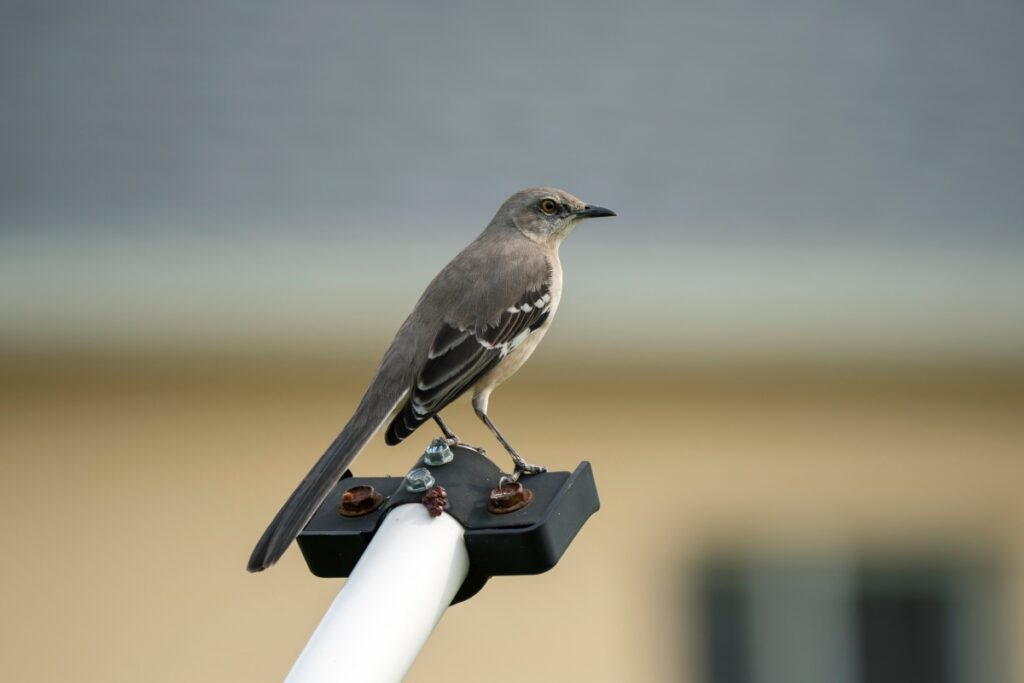As an Amazon Associate, we earn from qualifying purchases with no additional costs for you.
Tennessee is a land-locked state that is south of Kentucky. It is mainly known as the center for country music, but it also has good birdlife. At least 423 species of birds have been found in the state. I have written this blog to inform you of the best bird watching spots in Tennessee.
The best bird watching spots in Tennessee are those with various elevations and habitats, such as the Great Smoky Mountains National Park and Frozen Head State Park. Areas with wetlands, such as Ensley Bottoms Complex and Brainerd Levee, also make good birding spots.
A table giving the most exciting birds you can see at each of my top 12 birding spots in Tennessee:
| PARK | INTERESTING BIRDS YOU CAN SEE |
|---|---|
| Frozen Head State Park | Blackburnian Warbler and Veery |
| Great Smoky Mountains National Park | Common Raven and Red-breasted Nuthatch |
| Brainerd Levee | Lesser Yellowlegs and Baird’s Sandpiper |
| Roan Mountain State Park | Pine Siskin and Ruffed Grouse |
| Seven Islands State Park | American Pipit and Northern Bobwhite |
| Radnor Lake State Park | Scarlet Tanager and Yellow-billed Cuckoo |
| Sharps Ridge Memorial Park | Summer Tanager and Olive-sided Flycatcher |
| Tennessee National Wildlife Refuge | Pacific Loon and Red-necked Grebe |
| Reelfoot Lake | Mississippi Kite and Bald Eagle |
| Ensley Bottoms Complex | Black-bellied Whistling Duck and American White Pelican |
| Meeman-Shelby Forest State Park | Red-headed Woodpecker and Cerulean Warbler |
| Eagle Lake Refuge | Black-necked Stilt and Greater Yellowlegs |
Read on below to learn about the best places to visit if you are bird watching in Tennessee and to know which birds you can find in these spots.
TIP: If you want to check out the best pair of binoculars for bird watching, we recommend a pair of waterproof and fog-proof 8 x 42 binoculars like the Celestron – Outland X 8×42 Binoculars (Amazon link).
Best Places to Bird Watch in Tennessee
Tennessee stretches 440 miles from west to east, meaning it has a range of habitats from mountains to wetlands to forests and more. You can also find variations in altitude, which is useful when looking for birds found at higher elevations.
1. Frozen Head State Park
This park is in the Cumberland Mountains. It is in the western part of the state and is large, at 24,000 acres.
Frozen Head State Park is good for finding birds that breed at higher elevations, such as the Veery and Blackburnian Warblers.
Broad-winged Hawks can be seen perched in trees or flying overhead. You can see a lot of birds by the campground and visitor center, and you can also hike to see higher-elevation birds.
You can find many species in the forest here:
- Broad-winged Hawk,
- Pileated Woodpecker,
- Ruffed Grouse,
- Yellow-billed Cuckoo.
Several other songbirds, such as the Rose-breasted Grosbeak, Cerulean Warbler, Black-throated Green Warbler, and Scarlet Tanager, can be seen. Hooded Warblers and American Redstarts are two species that have also been recorded in this park.
Keep an eye out for Wood Thrushes, Ovenbirds, and Worm-eating Warblers. Often, these are in the lower understory of the forest or on the ground. The best time to birdwatch at Frozen Head is in summer and spring when temperatures are favorable.
TOP TIP: We took the time to test out some of the best birding binoculars out there. If you want to find out which type of binoculars you should be using, check out this article on 10×50 binoculars and this article on 10×42 binoculars to find out which may be better for you.
2. Great Smoky Mountains National Park
There is a significant change in elevation at the Great Smoky Mountains National Park, from about 870 feet to about 6,640 feet. This range means you can find several park habitats, vegetation zones, and bird communities.
At lower and middle altitudes, you can see bird species such as the following: Yellow-throated Vireo, Black-and-white Warbler, Louisiana Waterthrush, Eastern Towhee, and Indigo Bunting. You may also see Pileated Woodpeckers in the trees.
You need to drive to Clingman’s Dome and Newfound Gap for higher altitude birds. Higher elevation species to look for include the following: Winter Wren, Common Raven, Red-breasted Nuthatch, Veery, and Golden-crowned Kinglet. You should keep your eyes open for Peregrine Falcons as well.
You may also see Blackburnian, Canadian, Chestnut-sided, and Black-throated Green Warblers at higher elevations.
3. Brainerd Levee
This is a water retention area that was built to stop flooding. The levee is part of the South Chickamauga Creek Greenway, providing habitats for many birds. Habitats include woodlands, freshwater marshes, wetlands, mudflats, and fields. You can print and use a checklist for your bird watching trip here.
Waterfowl species you can find here include Green-winged Teal, Blue-winged Teal, Canvasback, Redhead, Hooded Merganser, Lesser Scaup, Ring-necked Duck, and Red-breasted Merganser.
Shorebirds recorded in this area include Lesser Yellowlegs, Baird’s Sandpiper, and Greater Yellowlegs. An assortment of other birds, such as herons and egrets, can be spotted in the area.
Raptors to watch out for include the Red-tailed Hawk and Red-shouldered Hawk, although Cooper’s Hawks may also be sometimes seen.
TIP: Check out my recommended products if you are looking for the best and trusted equipment for birdwatching in the wild or on your backyard (Amazon link):
- Celestron Outland X 8×42 Binoculars
- Celestron Ultima 80 Angled Spotting Scope
- National Audubon Society Birds of North America Book
- Design Free-standing Bird Bath
- Smart Bird Feeder with Camera
- Cedar Bird House for Outside
4. Roan Mountain State Park
This is a high-elevation area that stands at 6,285 feet. This is, therefore, a good place for bird watchers to see birds that prefer the higher elevations of the Appalachian Mountains.
There is a handy brochure on the best trails and places within the park to see birds here. You can download this brochure on your bird watching trip to Roan Mountain State Park.
Birds to watch at the state park include:
- Ruffed Grouse,
- Chestnut-sided Warblers,
- Golden-winged Warblers.
You can also see vireos like the Red-eyed Vireo and Blue-headed Vireo. You can find Black-throated Blue Warblers, Black-throated Green Warblers, Canada Warblers, and Pine Siskins. You can follow the road beyond this park to Carvers Gap, which also has many birds you will be looking for.
5. Seven Islands State Park
This park is 416 acres, consisting of forest, fields, a river, and grassland. The area is rich in birdlife.
Some of the species you can find here include the following: Northern Bobwhite, Yellow-breasted Chat, Eastern Bluebird, American Kestrel, and Wood Duck.
Many birders like visiting in winter because several sparrows can be seen, and you may see the American Pipit now. There are many trails you can walk along to look for birds.
6. Radnor Lake State Park
This park is found in the southern part of the city of Nashville. It’s 1,332 acres in size and is worth a trip if you are a birder.
Spring migration is the optimal time to visit because this green patch attracts many migrating songbirds. You can look for birds like the Scarlet Tanagers, Louisiana Waterthrushes, and Northern Parulas. These species can often be seen along the Lake Trail.
Barred Owls and Wood Ducks are known to breed in the park. You can also find other species, such as the Yellow-billed Cuckoo and Acadian Flycatcher.
In Radnor Lake, waterfowl often seen include American Wigeon, Bufflehead, Lesser Scaup, and Redhead. This state park also has an aviary that houses non-releasable raptors, so you should visit this as well.
TOP TIP: All bird watchers are different. To find out what makes you special as a bird watcher, check out this article, and to find out how birders are not weird, take a look at this one.
7. Sharps Ridge Memorial Park
Close to 150 bird species have been recorded in this area. A 1.5-mile road at the top of the ridge allows you to walk along while scanning for birds.
This park is perfect for visiting during spring migration when many songbirds are present, including warblers and vireos. The best time to visit this park is between March and May when most birds, including the migrating songbirds, can be seen.
You can find bird species such as the Summer Tanager, Orchard Oriole, Baltimore Oriole, and Rose-breasted Grosbeak.
8. Tennessee National Wildlife Refuge
This refuge is situated near Kentucky in the northwestern part of the state. This is a sizeable 51,358-acre area with diverse habitats, including ponds, rivers, upland hardwood forests, deciduous forests, grasslands, and fields. The Big Sandy Unit is recommended as the best site for bird watchers in the refuge.
It is at the Big Sandy Unit of Tennessee National Wildlife Refuge where you can see large numbers of waterfowl. Species to look for here include the Red-throated Loon, Pacific Loon, and Western and Red-necked Grebes. The checklist for this specific area shows a list of 377 bird species.
In the forested areas, you can look for such bird species as Cerulean Warbler, Hooded Warbler, Louisiana Waterthrush, and Wood Thrush. If you visit in winter, you may find several species of sparrows in the forest and grasses.
TIP: Knowing how to spot the birds in your yard is key to enjoying visits from your winged friends as much as possible! The best sources are trusted books, I recommend using the following (Amazon links):
– National Geographic Field Guide to the Birds of North America
– National Audubon Society Birds of North America
9. Reelfoot Lake
This is a 15,000-acre lake, which includes an area of bald cypress swampland. You can use a boardwalk to access more of the wetland area.
You can also hike on the trail or drive the autoroute. Since it is a big area to explore, its best to stop at a visitor center to get more information and a map
Bald Eagles, Ospreys, and Mississippi Kites nest in the region. The area is also excellent for warblers, such as Prothonotary Warblers, Yellow-throated Warblers, and Cerulean Warblers.
10. Ensley Bottoms Complex
Ensley Bottoms Complex is a very prolific spot for birds. It comprises sludge treatment ponds, fields, bottomland forests, and grasslands. At least 315 species of birds have been recorded here.
A few of the many species you can find here include the following: American White Pelican, Black-bellied Whistling Ducks, Black-necked Stilts, and Loggerhead Shrikes. The rare Sharp-tailed Sandpiper has even been observed here.
In the grassy areas, you should watch for Dickcissels and Northern Bobwhites. These two birds are found in grassland habitats.
11. Meeman-Shelby Forest State Park
This park is 12,539 acres in size. This state park is north of Memphis and along the Mississippi River. The habitats found here include upland forests, hardwood forests, lakes, and swamplands.
You can choose to walk along several hiking trails while bird watching. At least 250 bird species have been recorded in this park, making it particularly good for bird watching. The birds in this area include the following species: Hooded Warbler, Cerulean Warbler, and Swainson’s Warbler.
You can also find a variety of other birds here, including Yellow-crowned Night Herons, Anhinga, Great Egrets, and Great Blue Herons. Pileated Woodpeckers and beautiful Red-headed Woodpeckers can also be seen in forested areas.
12. Eagle Lake Refuge
This 3,253-acre refuge is in the Mississippi Alluvial Valley and has a record of 238 bird species. The refuge has several ponds, marshy areas, and a bottomland oak forest. This refuge is excellent for waterfowl and shorebird species.
Shorebirds you can find here include the following species: Black-necked Stilts, Greater Yellowlegs, Lesser Yellowlegs, and Least Sandpipers. You can also see Anhingas and Mississippi Kites in the refuge. Waterfowl you can see here include Gadwalls, Green-winged Teals, and American Wigeons.
Best Time to Bird Watch in Tennessee
Any time is good for bird watchers in Tennessee, but certain species or types of birds may be more numerous or only present in particular months or seasons.
| TYPES OF BIRDS | SEASON |
|---|---|
| Warblers and vireos | Spring |
| Sparrows | Winter |
The Tennessee State Bird
The Northern Mockingbird is the state bird of Tennessee, which was adopted as such in 1933. The mockingbird is a bold and conspicuous bird that is easy to identify. They also are highly vocal, especially in spring when males sing loudly for a mate, even at night.
The mockingbird is a clever mimic, so don’t be surprised if you hear one copying the sound of a car alarm. These birds live in open areas, such as the edges of forests and thick bushes, but they also live in cities.
Bird Watching Laws in Tennessee
Indigenous wildlife (including birds) is protected in Tennessee by Federal and State Law. The only birds not federally protected include the following species: House Sparrow, Eurasian Collared Dove, Rock Pigeon, European Starling, Mute Swan, and Muscovy Duck.
My Favourite Equipment for Bird Watching
Bird watching is one of the least expensive hobbies out there, but you still need some equipment to get the most out of it.
The essential equipment to start bird watching is a pair of binoculars. My preference is 8 X 42 binoculars. The number 8 is how much the magnification is, while 42 is the field of view in millimeters of the lenses.
A pair of waterproof and fog-proof 8 x 42 binoculars like the Celestron – Outland X 8×42 Binoculars on Amazon is an excellent choice for both beginners and experts.
In time, you can choose more expensive models and also opt to buy a spotting scope like the Celestron Ultima 80 on Amazon.
These are a lot more expensive compared with binoculars though, so if you are only a beginner, start with binoculars first. A spotting scope is only helpful for birds far away, such as out on a pond or seashore.
There are a few rules or guidelines you should abide by as an ethical birder. These are listed below.
- Do not enter private lands without prior permission from landowners.
- Follow all the rules in refuges and reserves, including cleaning up any garbage from your campsite.
- Do not disturb birds on nests.
- Do not use apps and play songs to call up birds when they are hungry, tired, and breeding during spring and summer.
Conclusion
Tennessee has a variety of habitats present for birds. There is also a range in elevations, meaning you can spot birds that prefer to live only at specific elevations. You should add Tennessee to your list of states to visit for bird watching.
TIP: If you want to check out the best pair of binoculars for bird watching, we recommend a pair of waterproof and fog-proof 8 x 42 binoculars like the Celestron – Outland X 8×42 Binoculars (Amazon link).


